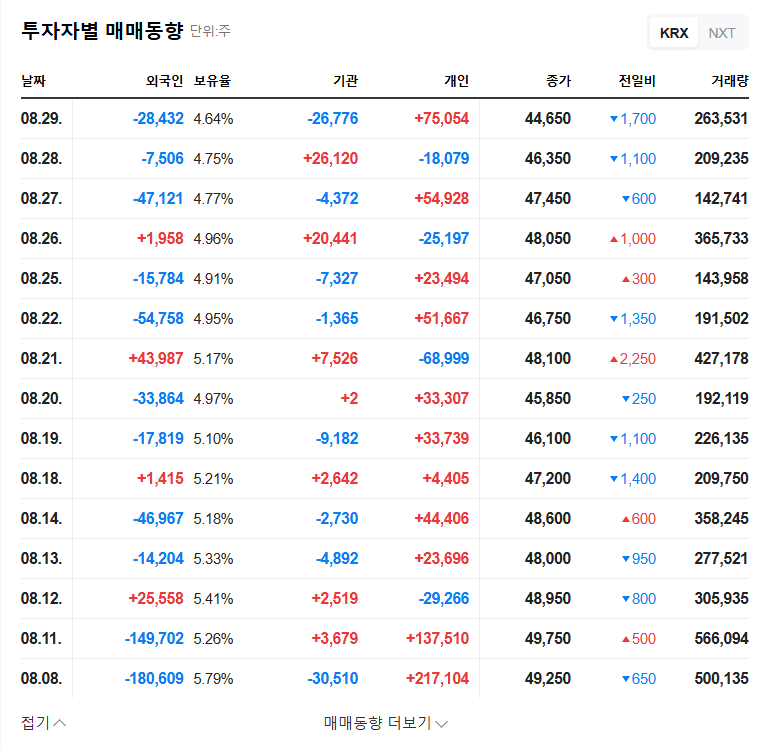This comprehensive KGA stock analysis provides a deep dive into the recent corporate actions and fundamental health of KGA CO., LTD (케이지에이). With the company’s recent announcement regarding its 1st convertible bond exercise, investors are keenly watching for potential impacts on its stock price and long-term value. This report unpacks the company’s financial status, market environment, and strategic direction to offer clear insights and actionable recommendations for navigating the path ahead.
The Convertible Bond Exercise: A Closer Look
On November 5, 2025, KGA CO., LTD announced the issuance of 148,957 new shares resulting from the exercise of convertible bond rights, an event officially filed and available in this Official Disclosure. These new shares represent approximately 1.18% of the company’s market capitalization.
- •New Shares Issued: 148,957 shares
- •Conversion Price: KRW 3,021 per share
- •Expected Listing Date: November 20, 2025
The immediate effect of this issuance is an increase in the number of outstanding shares, which often leads to a short-term dilution of shareholder value. Furthermore, with the current stock price (KRW 5,220) trading significantly above the conversion price, there is a high probability of profit-taking by bondholders. This could introduce significant selling pressure, potentially driving the stock outlook down in the short term. For a deeper understanding of these financial instruments, you can read our guide on How Convertible Bonds Work.
Fundamental Analysis: The Bigger Picture for KGA CO., LTD
Mixed Signals in Corporate Health
While KGA has benefited from its KOSDAQ listing and recent mergers, which boosted its fundraising capabilities and brand visibility, its recent performance paints a concerning picture. The company is strategically pursuing new growth areas like solid-state batteries and dry electrode processes, but its core business is facing headwinds.
Positive Developments: The company is building a foundation for future R&D and exploring next-generation battery technologies. It is also actively working to diversify its customer base to reduce dependency on a few key clients.
Negative Indicators (H1 2025): Revenue plummeted by 40% YoY to KRW 16.542 billion, and operating profit fell nearly 50%. The company swung to a net loss of KRW -5.408 billion, primarily due to merger-related expenses. This decline, coupled with a high debt burden and exposure to foreign exchange risks, raises red flags.
Financial Indicators Tell a Story of Decline
A review of KGA’s financial projections reveals a trend of slowing growth and eroding profitability. The operating profit is forecasted to turn negative in 2025, a significant concern for any KGA stock analysis.
- •Revenue Trend: Expected to decline from KRW 1,147.7 billion (2022) to KRW 469.4 billion (2025).
- •Profitability: Operating profit is projected to fall to a deficit of KRW -30.8 billion in 2025.
- •Liquidity Risk: The Current Ratio has alarmingly dropped from 340.96% in 2022 to 58.09% in 2024, indicating potential challenges in meeting short-term obligations.
Navigating a Turbulent Market Environment
The global secondary battery market holds long-term promise, but short-term realities are harsh. As noted by industry reports from sources like BloombergNEF, major battery manufacturers are scaling back capital expenditures amidst a temporary slowdown in EV demand. This directly impacts equipment suppliers like KGA. Additionally, macroeconomic factors such as rising KRW/USD and KRW/EUR exchange rates create further financial risk due to the company’s foreign currency-denominated debt.
Investment Thesis: A Cautious Approach is Advised
Investment Opinion: “Caution”
Given the significant fundamental challenges, high debt, and market uncertainties facing KGA CO., LTD, a cautious investment approach is warranted. The short-term pressures from the convertible bond exercise are secondary to these deeper structural issues.
Key Factors for Investors to Monitor
For those considering an investment in KGA CO., LTD (케이지에이), the focus should be on long-term viability rather than short-term stock movements. Here are critical areas to watch:
- •New Business Commercialization: Track tangible progress in new ventures like solid-state batteries. Look for specific orders, technological milestones, and a clear timeline for revenue generation.
- •Financial Health Improvement: Monitor efforts to manage the debt-to-equity ratio, hedge against currency risks, and restore positive cash flow from operations.
- •Market Recovery Signals: Pay attention to broader trends in the secondary battery market, including a resumption of capital investment by major players.
- •Future Earnings Guidance: The H2 2025 earnings report and subsequent corporate guidance will be crucial in assessing whether a turnaround is underway.
In conclusion, a prudent investment strategy for KGA involves patience and careful monitoring. The potential rewards from its next-generation technology initiatives are significant, but they must be weighed against the very real risks present in its current financial and operational state.







